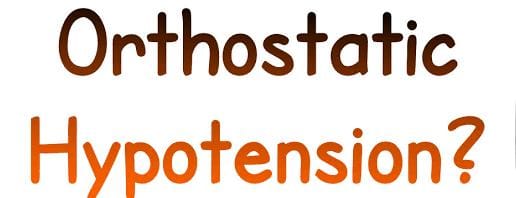Sandeep Dhand
Nutritionist And Health Educator
Postural Hypertension, also known as Orthostatic Hypertension, refers to an abnormal rise in blood pressure when a person moves from a lying or sitting position to a standing position. While most people are familiar with Orthostatic Hypotension (a drop in blood pressure upon standing), postural hypertension is the opposite condition. It is less common but still significant, especially because of its potential health implications.

This condition often goes unnoticed as it does not always present clear symptoms, but when left unmanaged, it can lead to serious complications. Let’s break it down in detail to understand its causes, symptoms, diagnosis, treatment, and prevention.

Understanding Blood Pressure
Blood pressure is the force exerted by circulating blood against the walls of blood vessels. It is measured in two numbers:
- Systolic Pressure: The pressure when the heart beats.
- Diastolic Pressure: The pressure when the heart rests between beats.
For example, a normal blood pressure reading is around 120/80 mmHg.
In postural hypertension, there is an abnormal increase in systolic or diastolic pressure (or both) when a person stands up.
What Happens in Postural Hypertension?
When you stand up, gravity causes blood to pool in your legs and lower body. To maintain normal blood pressure and ensure that enough blood reaches the brain and other vital organs, the body makes adjustments:
The heart beats slightly faster.
Blood vessels constrict to push blood upward.
In people with postural hypertension, these mechanisms overreact, causing an excessive rise in blood pressure instead of maintaining normal levels.
Causes of Postural Hypertension
Several factors can contribute to this condition. These include:
- Autonomic Nervous System Dysregulation
The autonomic nervous system controls involuntary functions like heart rate, blood pressure, and digestion. If this system malfunctions, it can cause abnormal blood pressure regulation.
- Underlying Health Conditions
Diabetes: Long-term diabetes can damage nerves that regulate blood pressure.
Chronic Kidney Disease: The kidneys play a role in regulating blood pressure, and their dysfunction can lead to hypertension.
Parkinson’s Disease: This neurological disorder can affect blood pressure regulation.
- Medications
Certain drugs, such as decongestants, nonsteroidal anti-inflammatory drugs (NSAIDs), or steroids, can cause postural hypertension as a side effect.
- Aging
As people age, their blood vessels may become less elastic, and the regulatory mechanisms for blood pressure may weaken, increasing the risk of postural hypertension.
- Overactivation of the Renin-Angiotensin System
This system helps regulate blood pressure and fluid balance. Overactivation can lead to excessive constriction of blood vessels when standing.
- Lifestyle Factors
High salt intake can increase fluid retention and blood pressure.
Obesity and lack of physical activity can also contribute to the condition.
Symptoms of Postural Hypertension
Postural hypertension often does not produce noticeable symptoms, but when it does, they may include:
Headaches: Particularly at the back of the head or when standing.
Dizziness or Lightheadedness: Rare but possible, especially in severe cases.
Blurred Vision: Due to increased pressure affecting blood flow to the eyes.
Palpitations: A sensation of a rapid or irregular heartbeat.
Nausea: Feeling sick when standing up quickly.
In chronic cases, persistent high blood pressure can damage organs like the heart, brain, and kidneys, leading to more severe health issues.
Complications of Postural Hypertension
If left untreated, postural hypertension can lead to:
Heart Disease: Increased workload on the heart can lead to conditions like left ventricular hypertrophy (thickening of the heart muscle).
Kidney Damage: Persistently high blood pressure can harm kidney function.
Stroke: Excessive blood pressure can damage blood vessels in the brain.
How Is Postural Hypertension Diagnosed?
Diagnosing postural hypertension involves several steps:
- Medical History
Doctors will ask about symptoms, medical history, and any medications being taken.
- Blood Pressure Measurements
Blood pressure is measured in different positions (lying down, sitting, and standing). A significant increase in systolic or diastolic pressure upon standing suggests postural hypertension.
- Ambulatory Blood Pressure Monitoring
This involves wearing a device that records blood pressure at regular intervals throughout the day and night to observe patterns.
- Laboratory Tests
Blood tests may be done to check for underlying causes like kidney function, diabetes, or hormonal imbalances.
- Autonomic Function Tests
These tests evaluate how well the autonomic nervous system regulates blood pressure and heart rate.
Treatment of Postural Hypertension
Treatment aims to manage symptoms, address underlying causes, and prevent complications.
- Lifestyle Changes
Dietary Adjustments: Reducing salt intake can help lower blood pressure.
Weight Management: Maintaining a healthy weight reduces the strain on the cardiovascular system.
Hydration: Drinking adequate water prevents dehydration, which can worsen blood pressure issues.
Physical Activity: Regular exercise improves overall cardiovascular health.
- Medications
Blood Pressure Medications: In some cases, doctors may prescribe medications to regulate blood pressure. These could include ACE inhibitors, calcium channel blockers, or beta-blockers.
Medications for Underlying Conditions: Treating conditions like diabetes or kidney disease can improve postural hypertension.
- Postural Adjustments
Standing up slowly from a sitting or lying position can reduce the sudden rise in blood pressure.
Avoiding prolonged standing can also help.
- Monitoring and Follow-Up
Regular check-ups with a healthcare provider ensure that treatment is effective and complications are avoided.
Prevention of Postural Hypertension
While not all cases can be prevented, certain steps can reduce the risk:
Leading a healthy lifestyle with a balanced diet and regular exercise.
Managing chronic conditions like diabetes and high blood pressure.
Avoiding excessive salt and caffeine intake.
Staying hydrated and avoiding dehydration.
Postural Hypertension vs. Orthostatic Hypotension
It’s important to note the difference between these two conditions:
Postural Hypertension: Blood pressure increases abnormally when standing.
Orthostatic Hypotension: Blood pressure drops abnormally when standing.
While they are opposites, both involve issues with blood pressure regulation and can have serious health consequences if not managed properly.
When to See a Doctor
If you experience symptoms like persistent headaches, dizziness, or palpitations when standing, it’s important to consult a healthcare provider. Early diagnosis and treatment can prevent complications.
Conclusion
Postural Hypertension is a relatively uncommon but significant condition that involves an abnormal rise in blood pressure upon standing. While it may not always produce noticeable symptoms, it can lead to serious health issues if left unmanaged. Understanding its causes, symptoms, and treatment options is essential for maintaining good health.
By adopting a healthy lifestyle, managing underlying conditions, and working closely with healthcare providers, individuals can effectively manage postural hypertension and reduce their risk of complications.